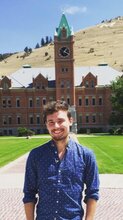
This project seeks to make two interventions. First, the demonstrated cultural, juridical, and historical connection between Jewish writers in Yiddish and in Russian in the Revolutionary period naturally engenders a comparative approach, but also a generic evaluation. Pogrom literature, as it was written across the linguistic terrain of the Borderlands, is a unified genre worthy of unified consideration. By weaving the pogrom stories in Yiddish—a language whose influence was never as wide and was drastically reduced in the aftermath of the Holocaust—with those writing in the dominant language of the early Soviet Union, I hope to build upon extant scholarship that mainly addresses each national literature separately. This project is not among the first to interrogate the division of literatures into national canons, but the almost universal multilingualism of the East European Jewish community makes the explicit rejection of those divisions more urgent. Furthermore, a close attention to the historical conditions that inform pogrom literature requires a reckoning with changes in political, national, and ethnic consciousness that make the pogroms a historical possibility for literary consideration. The biopolitical turn so crucial to our understanding of modernity—its “decisive event”—also grants insight into the aesthetics of violence at the core of pogrom literature. With biopolitics as a frame, we can situate the pogrom violence of the late nineteenth and early twentieth centuries within the context of emerging and changing modernity and the historical conditions that make the human body—and populations of human bodies—precisely what is at stake in political calculations; pogrom literature, like all literature, is both created by its political and cultural context and has a role to play in the creation and framing of that same reality.